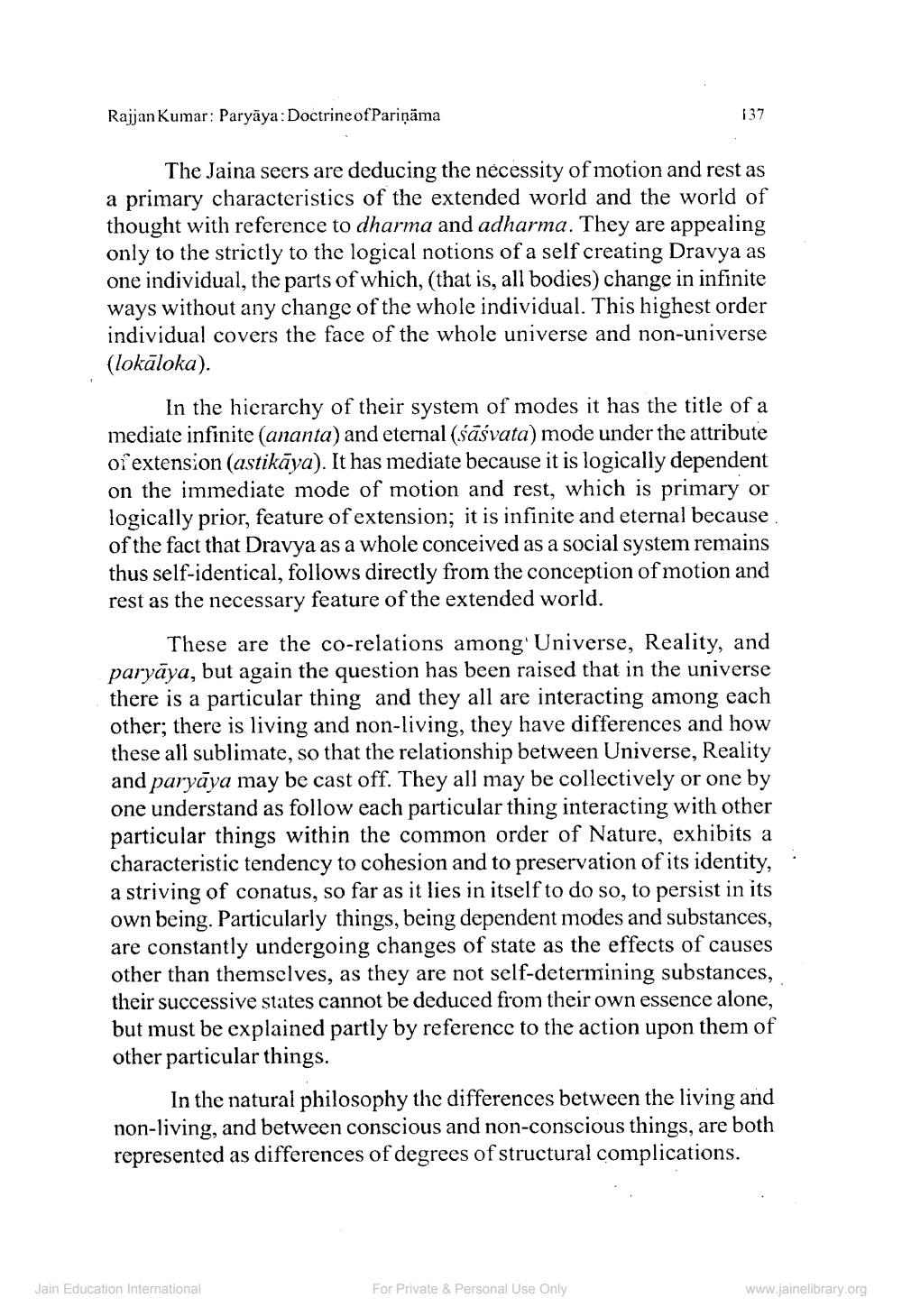________________
Rajjan Kumar: Paryāya: Doctrine of Pariņāma
137
The Jaina seers are deducing the necessity of motion and rest as a primary characteristics of the extended world and the world of thought with reference to dharma and adharma. They are appealing only to the strictly to the logical notions of a self creating Dravya as one individual, the parts of which, (that is, all bodies) change in infinite ways without any change of the whole individual. This highest order individual covers the face of the whole universe and non-universe (lokāloka).
In the hierarchy of their system of modes it has the title of a mediate infinite (ananta) and eternal (śāśvata) mode under the attribute of extension (astikāya). It has mediate because it is logically dependent on the immediate mode of motion and rest, which is primary or logically prior, feature of extension; it is infinite and eternal because of the fact that Dravya as a whole conceived as a social system remains thus self-identical, follows directly from the conception of motion and rest as the necessary feature of the extended world.
These are the co-relations among Universe, Reality, and paryaya, but again the question has been raised that in the univ there is a particular thing and they all are interacting among each other; there is living and non-living, they have differences and how these all sublimate, so that the relationship between Universe, Reality and paryāya may be cast off. They all may be collectively or one by one understand as follow each particular thing interacting with other particular things within the common order of Nature, exhibits a characteristic tendency to cohesion and to preservation of its identity, . a striving of conatus, so far as it lies in itself to do so, to persist in its own being. Particularly things, being dependent modes and substances, are constantly undergoing changes of state as the effects of causes other than themselves, as they are not self-determining substances, their successive states cannot be deduced from their own essence alone, but must be explained partly by reference to the action upon them of other particular things.
In the natural philosophy the differences between the living and non-living, and between conscious and non-conscious things, are both represented as differences of degrees of structural complications.
Jain Education International
For Private & Personal Use Only
www.jainelibrary.org




